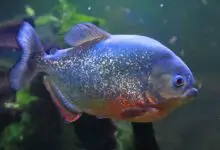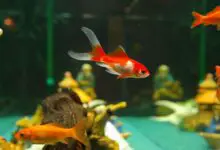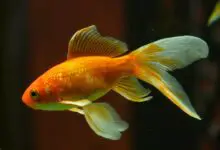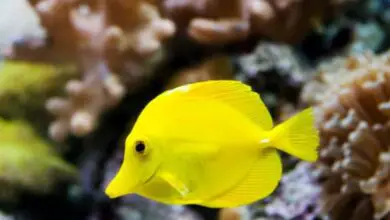Why Keeping Fewer Fish Can Be Better for Aquariums
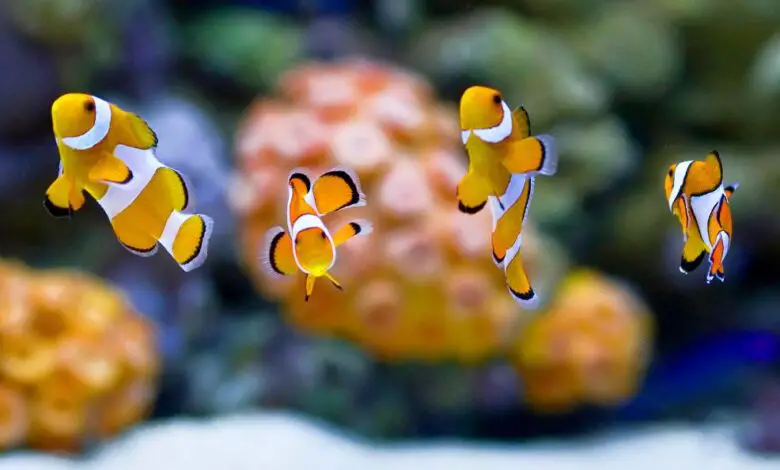
Crowded tanks full of fish may look impressive in pet stores. But at home, less can often be more. Understocking provides benefits like improved water quality, less aggression and healthier fish.
This guide covers advantages of keeping fewer fish in aquariums. Get tips for making understocked tanks rewarding through careful species selection and aquascaping. Discover why understocking leads to easier care and more fulfillment long-term.
Stocking Considerations Based on Aquarium Size
Recommended stocking densities provide a starting point for stocking limits. Here are general guidelines by tank volume:
- 10 gallon – 1 inch of adult fish per 2 gallons. Ex: 5-6 tetra-sized fish around 2 inches each.
- 20 gallon – 1 inch per 2-3 gallons. Ex: 1 betta plus school of 8-10 nano fish.
- 40 gallon breeder – 1 inch per 2-3 gallons. Ex: Mated pair of German blue rams plus 20 neon tetras.
- 55 gallon – 1 inch per 3 gallons. Ex: Angelfish pair plus 20 harlequin rasboras and 10 corydoras.
- 75 gallon – 1 inch per 3-4 gallons. Ex: Pearl gouramis, school of large tetras, plus bottom feeders.
- 90+ gallon – 1 inch per 4-5+ gallons. Ex: Showcase larger cichlids, goldfish or catfish with ample room.
These are rough estimates that require adjustment based on species, filtration and tank dimensions. Use as a starting point then understock.
Water Quality Challenges in Overstocked Aquariums
Exceeding density guidelines strains the tank ecosystem and water quality:
- Ammonia and nitrite spikes – Less dilution of waste from higher fish loads. Cycling crashes occur.
- Frequent nitrate spikes – Increased waste drives nitrates up faster between water changes.
- More frequent water changes – Over 25% weekly changes needed to control waste accumulation.
- More maintenance overall – Increased bioload quickly fouls tanks requiring extra filter cleanings, gravel siphoning and algae removal.
- Higher filtration costs – Added filter media, upgraded pumps or added units needed to compensate.
- Difficult balance – Any lapse in maintenance risks dangerous parameter spikes with minimal safety margin.
Understocking eases pressure on water quality enormously. Parameters remain stable between routine cleanings. Less work maintains pristine conditions.
Aggression Issues in Overcrowded Aquariums
Cramps quarters breed aggressive behavior and stress among fish:
- Lack of defined territories – No space for fish to establish boundaries and retreats. Constant border disputes erupt.
- Competition for resources – Too few hiding spots and prime tank areas triggers constant rivalry and fighting.
- Damage from fighting – Missing scales, shredded fins and major injuries result from crowded conditions.
- Stunted growth – Subordinate fish denied food get outcompeted and fail to thrive. Growth variations occur.
- Increased disease transmission – Nipped fins expose openings for bacteria and fungus. Parasites spread rapidly in tight confines.
- Stress – Bullied fish suffer chronically elevated stress from the demands of overcrowding. Immune systems weaken.
The only solution in overstocked tanks is removing fish. Understocking avoids these problems from the start.
Benefits of Understocking for Decor and Plants
Beyond fish health, understocking enhances aesthetics:
- Aquascaping freedom – Wide open spaces to create landspe with drfitwood, rocks and lush vegetation. Less rearrangement from digging fish.
- Planted tanks thrive – Less debris accumulation so plants stay healthier without getting buried or uprooted.
- Keeping shy species – Timid fish feel secure. They make regular appearences rather than hiding when tank has ample retreats.
- Long, graceful fish shine – Extra swim room lets angelfish, goldfish and other large fish glide gracefully without crowding.
- No distracting clutter – Limit ornaments, caves and novelties to just a few eye-catching pieces. Avoid overwhelming the senses.
Miminal stocking draws focus to the aquascape itself. Nature aquarium styles especially benefit from underpopulated spaces.
Satisfaction from Selecting Favorite Species
Less can be more when intentionally choosing pleasing fish rather than mix-and-matching random species.
- Highlight favored fish – Keep species you love front and center rather than relegating them to odd balls. Build tanks around particular fish.
- Suit fish to tank conditions – Select inhabitants ideal for the tank volume, dimensions, water parameters and decor. This ensures proper environment and care.
- Specialize in certain families – Become an expert breeder of single genus like cichlids, livebearers, killies, tetras, etc.
- Upgrade methods and equipment to pamper and display special fish to their best advantage.
- Interaction improves – Less shyness and better visibility of fewer inhabitants. Individual fish gain personality.
Careful fish selection tailored to the tank stays engaging long-term. Bonds form over years of close observation of fish behaviors and interactions.
Upgrading Equipment to Allow Added Stocking
If desired, upgrade filtration, oxygenation and tank dimensions to moderately increase density while preserving water quality and fish health.
- Incrementally overfilter – provided 3-5 times total volume turnover per hour. Use a combination of hang-on-back, canister and sponge filters.
- Maximize oxygenation – employ multiple air pumps, powerheads and surface rippling mechanisms. Test oxygen levels.
- Maintain stable parameters – keep ammonia/nitrites at zero and nitrates under 20 ppm with extra water changes
- Use larger tanks – upgrade footprints to at least 55-75 gallons to comfortably house more fish once equipped.
- Adjust stocking gradually – add new groups slowly over months to grow occupancy without disrupting balance.
Avoid radically overhauling successful set ups. Small increases keep tanks operating smoothly. Prioritize fish health over merely adding variety or quantity. Moderation brings steady rewards.
The Joy of Understocked Simplicity
At first glance, understocked tanks may seem sparse or boring to some aquarists. But limiting populations promotes health and reveals the beauty aquascaping and fish.
Fewer fish reduce maintenance. Care focuses on individuals. Underpopulated spaces allow fish to shine against natural planted backdrops.
Patience and planning yields tanks that improve with time as occupants mature. Select fish purposefully, cater equipment to their needs, and provide an artful stage. Thoroughly enjoy and care for each finned resident rather than merely collecting.
The population depends on the setup and species. Discover the possibilities by starting conservatively stocked. Aquariums and fishkeeping become more fulfilling when less is more!

